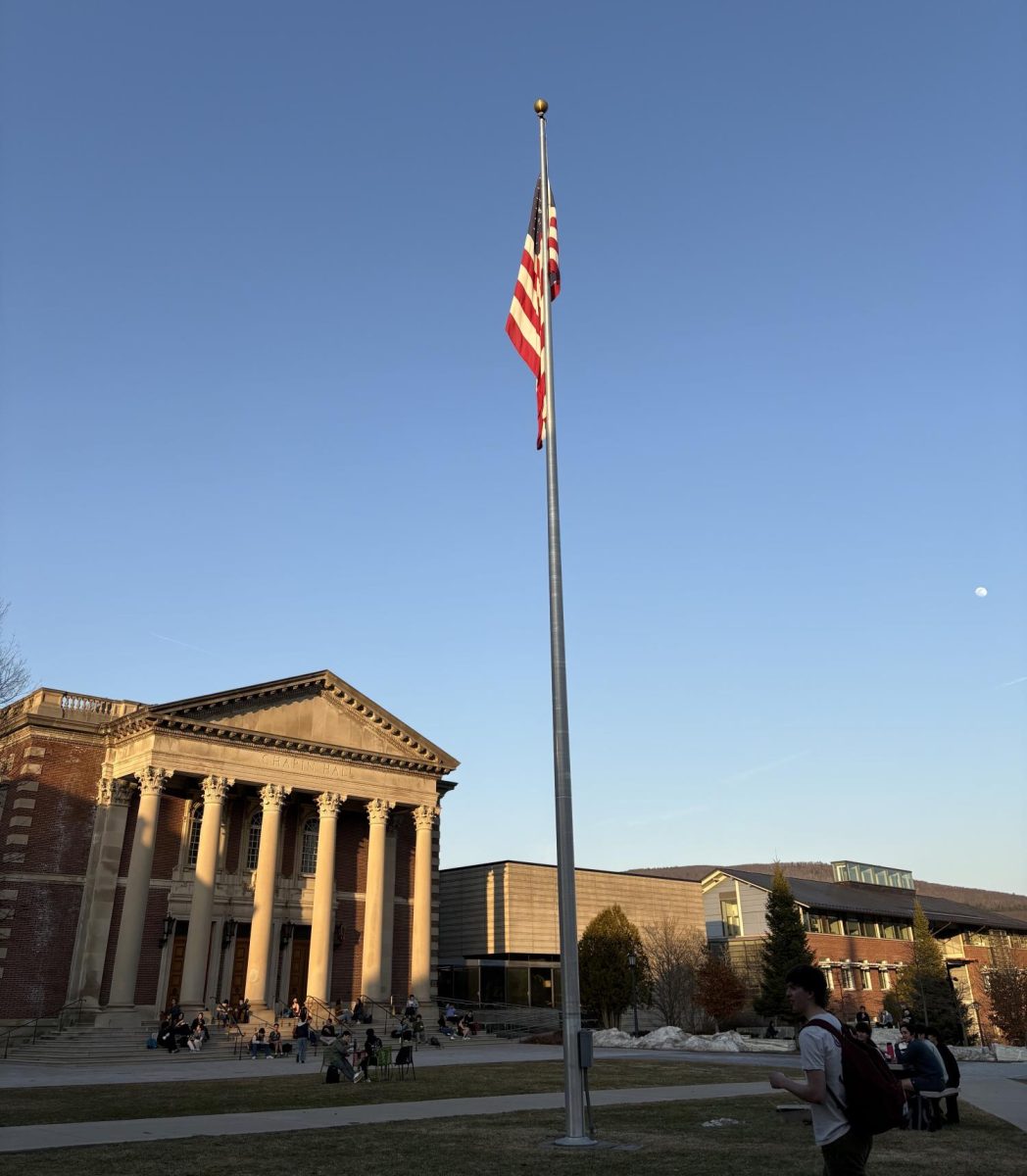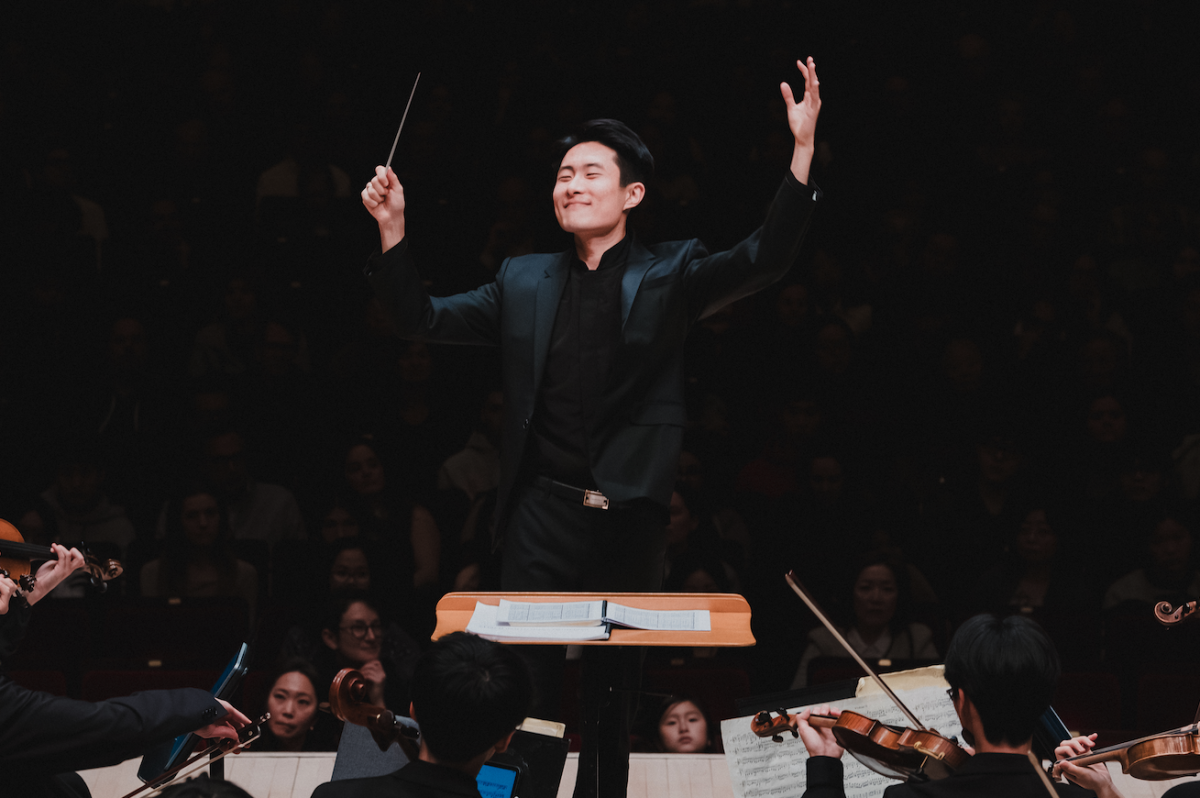An ode to leaky ceilings: How campus architecture sends message of perfectionism
February 16, 2022
I graduated from Williams a few weeks ago, but my relationship to this school has been much longer than the typical four year cycle. I know Williams intimately: I grew up in Williamstown and as a kid, I remember eating snacks in the booths in Baxter Hall before Paresky Center replaced it in 2007. In middle school, I played Dungeons and Dragons with friends in the old Sawyer Library. When the new Sawyer Library opened in 2014, I did my high school homework there. Williams always felt like my home, so it was painful to leave when I decided to attend Carleton College in Minnesota.
I missed home so much that I transferred to Williams. However, the campus I returned to looks radically different, physically, than the one I grew up around. Not only are many of the buildings I knew gone, but they have been replaced by structures that are so new, shiny, and perfect that they don’t evoke “home” as easily. Perfectionism is baked into the architecture of this campus, leaving little room for all of its residents and visitors to feel like people who, inherently imperfect, have faults and sometimes fail.
During a class reunion one year, I overheard some alums discussing their sadness at the disappearance of a particular cluster of pine trees in front of Bernhard Music Center. I also remembered those pine trees fondly. Before the quad between Paresky and Sawyer was constructed, those trees formed a shady, cozy nook with a bench in the center. One spring, Williams bulldozed those trees. In their place, Williams dumped a mountain of rectilinear, cold, and imposing marble blocks. What was once a warm and safe space, enshrined in memory, is now gone and replaced with marble, whose crisp edges and whiteness give the impression of formality, institutionality, cleanliness, and wealth. This design choice, and many others on our campus, reflect a discomfort with the aging, the decaying, and the imperfect — all essential features of being human.
Signs of decay and aging were common at Carleton, a less wealthy school. The college had a single theater, which was condemned and unusable. Like many of Carleton’s buildings, it looked visibly antiquated. After growing up around Williams, I was surprised that other schools couldn’t afford to constantly replace aging structures. Yet, some of my dearest memories from my time on Carleton’s campus stem from the idiosyncrasies of its outdated buildings. I fondly remember the metallic taste of the water from the Carleton library’s ancient fountain during the week I spent studying for my first finals, as well as the second floor bathroom doors with perpetually broken locks. These architectural details color and ground my memory of Carleton.
Similarly, at Williams, my brightest memories are set in spaces that were bizarre and imperfect. As a kid, my dad, a biologist, would guide me to his lab through a harshly lit connector tunnel full of rainbow-colored steam pipes. I forget how the lab itself looked, but that tunnel, so proudly raw and unsculpted, stands out in my memory. That tunnel had a sense of fun and playfulness that engaged my imagination, something lacking in the glass atriums of the new science center that replaced it. My most enduring memories as a student also come from “flawed” spaces. The days I spent rolling a ball down the comically slanted floors of my dorm room in the Susie Hopkins co-op to pass the time in quarantine are far more memorable than the cumulative months I’ve spent in Sawyer.
The spaces in which we study, eat, and live form the sensorial substrate of our memories. Williams repeatedly paves over that substrate with the shiny, sterile, modern, and “perfect.” I often hear friends observe how Williams has very few cozy, informal spaces to study. Almost every academic building is minimalist, cold, and enrobed in glass. The buildings that are not aggressively modern, such as the 24-hour reading room in Sawyer, exude stuffy institutionality and wealth, which is just as alienating. I cannot relate to spaces like these, nor are they places I feel safe and at home. The moment a building begins to age and to accrue memories — the moment it becomes flawed, relatable, and emotionally valuable — Williams replaces it.
At Williams, I felt pressure to keep up a veneer of perfection as glossy as its buildings. I often strategically chose to work in Sawyer because there, amid the marble staircases, towering windows, and magnificent architecture, I felt held to a high standard of quality. I believed my work had to match Sawyer in excellence to make me worthy of such a library. In hindsight, the edifice of Sawyer itself played a part in pressuring me towards perfection. The first of many times I went to a professor to ask for an extension, I was so afraid of being inadequate for this immaculate campus that I sobbed in their office.
The architecture at Williams, and the pace at which Williams replaces aging buildings, sends subliminal messages about the values Williams hopes to instill, perhaps the most central of which is a rejection of imperfect humanity in favor of cold perfectionism. Sawyer was simply impressing upon me the values inherent in its design. Perhaps this is why many students seek out warmer, more relatable spaces like Goodrich or the Davis Center (which, ironically, is likely getting replaced soon by a big glass building). Students might be happier and feel more welcomed by this campus if the values built into our buildings included imperfection, coziness, relatability, quirkiness, a sense of fun, and a respect for memory.
When I return for reunion, will I be able to visit the slanted floors of Susie Hopkins? Will Williams preserve any of the imperfect spaces I was able to connect to? There is more than sentimental value in preserving the past, much like the experience of revisiting a childhood bedroom full of abandoned toys. Real homes accumulate imperfect little reminders of time’s passage.
For Williams to feel like a home and not a cold institution, I urge this college to let some buildings get old, drip from weird places, and develop clutter and character. Those are the kinds of spaces people come to love and form memories about. Perhaps welcoming age and decay into our academic buildings would help Williams as a whole embrace imperfection. Perfection is a heavy burden, and letting it go might allow this community to breathe more easily, take a load off, and start to feel like this school is a place where imperfect people, not perfectionist robots, truly belong.
Noah Savage ’21.5 is a recent alum of the College. He is from Williamstown, Mass.








